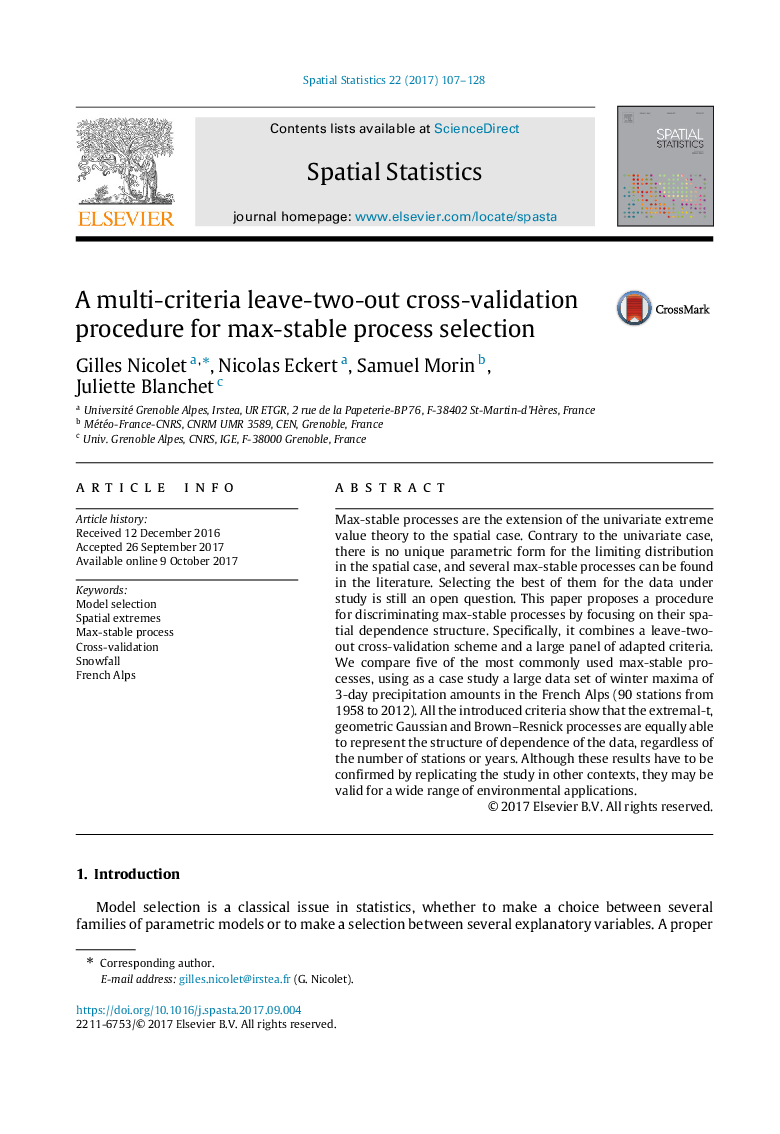| Article ID | Journal | Published Year | Pages | File Type |
|---|---|---|---|---|
| 5118969 | Spatial Statistics | 2017 | 22 Pages |
Max-stable processes are the extension of the univariate extreme value theory to the spatial case. Contrary to the univariate case, there is no unique parametric form for the limiting distribution in the spatial case, and several max-stable processes can be found in the literature. Selecting the best of them for the data under study is still an open question. This paper proposes a procedure for discriminating max-stable processes by focusing on their spatial dependence structure. Specifically, it combines a leave-two-out cross-validation scheme and a large panel of adapted criteria. We compare five of the most commonly used max-stable processes, using as a case study a large data set of winter maxima of3-day precipitation amounts in the French Alps (90 stations from 1958 to 2012). All the introduced criteria show that the extremal-t, geometric Gaussian and Brown-Resnick processes are equally able to represent the structure of dependence of the data, regardless of the number of stations or years. Although these results have to be confirmed by replicating the study in other contexts, they may be valid for a wide range of environmental applications.
